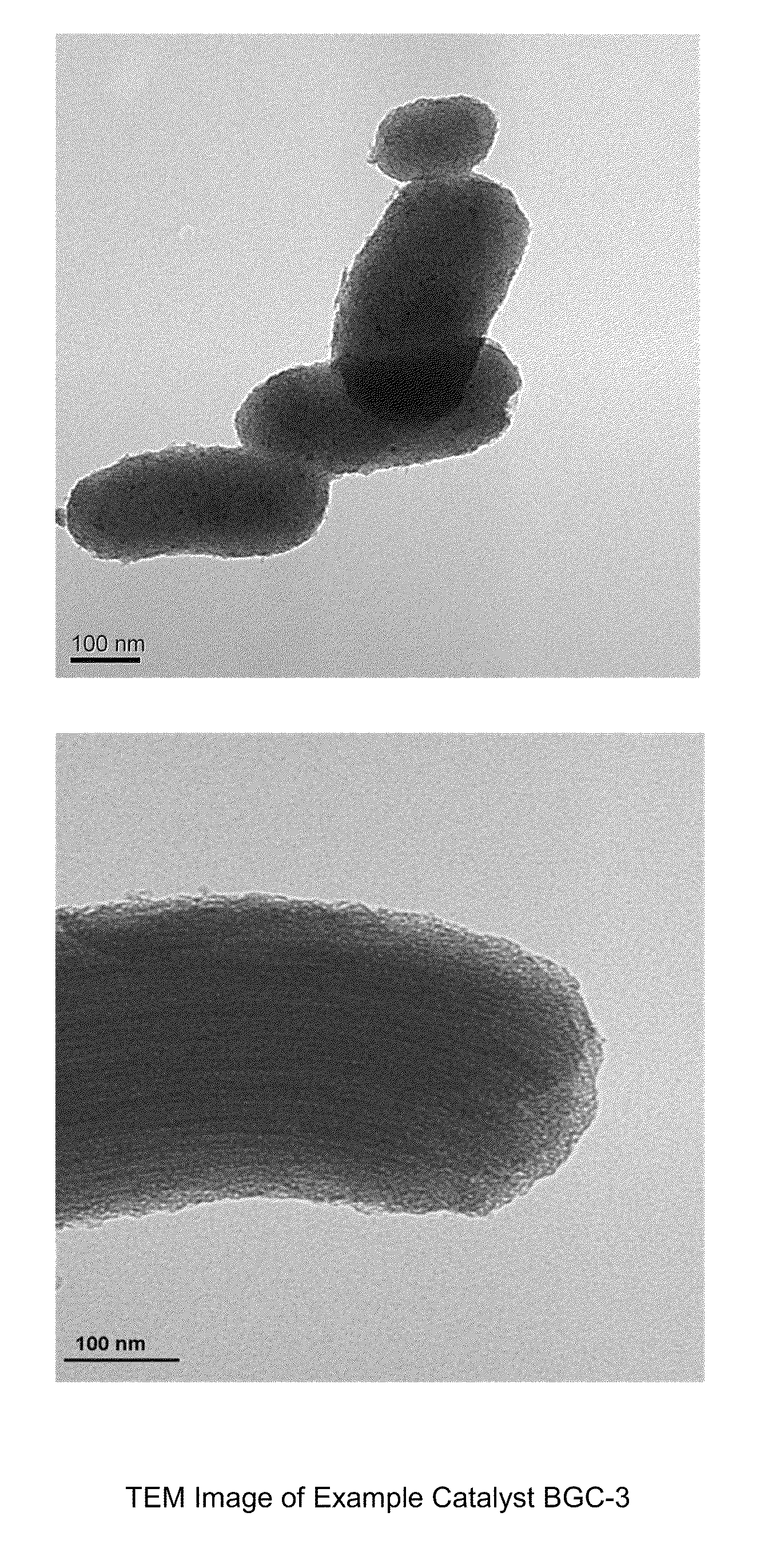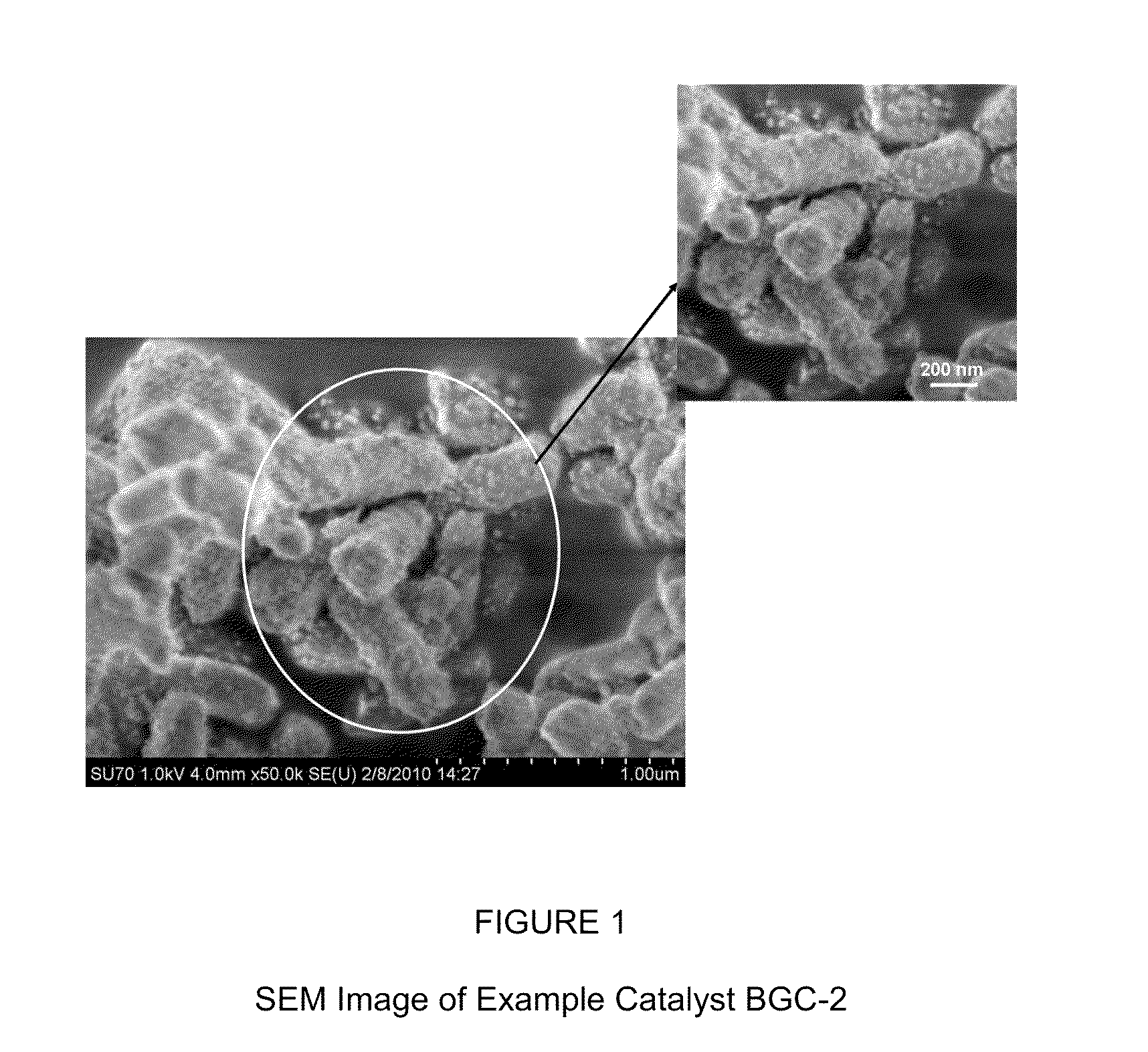Nanoparticle catalysts and method of using the same for biomass gasification
a technology of nanoparticle catalysts and biomass gasification, which is applied in the direction of metal/metal-oxide/metal-hydroxide catalysts, combustible gas production, chemical production, etc., can solve the problems of environmental impact of producing the required energy and the amount of energy introduced in the gasification process, so as to improve the pyrolysis and/or gasification of biomass, reduce solid yield, and improve the effect of gas yield
- Summary
- Abstract
- Description
- Claims
- Application Information
AI Technical Summary
Benefits of technology
Problems solved by technology
Method used
Image
Examples
Embodiment Construction
[0033]In further detail, the applied nanoalloy catalyst or dual catalyst and related methods provide improved biomass pyrolysis to produce more stable bio-oils and syngas. As noted above, the disclosure provides a means to increase gas or liquid yields, as desired, and reduce solid / char product. The term “gasification” here includes slow or fast pyrolysis / gasification, in the absence or presence of oxygen, and / or in the absence or presence of steam, whereby the pyrolysis / gasification process is carried out sequentially, or simultaneously. The improved liquid and / or gas yields occur at lower biomass gasification temperatures than conventionally used.
[0034]The dual catalyst of one example herein comprises a volatile organometallic compound and a nanoalloy catalyst / nanocatalyst for improved gasification of biomass including higher gas yields, reduced solid yields, and reduced liquid yields. In another example, it is also possible to use the nanoalloy catalyst and / or dual catalyst disc...
PUM
| Property | Measurement | Unit |
|---|---|---|
| Temperature | aaaaa | aaaaa |
| Temperature | aaaaa | aaaaa |
| Fraction | aaaaa | aaaaa |
Abstract
Description
Claims
Application Information
 Login to View More
Login to View More - R&D
- Intellectual Property
- Life Sciences
- Materials
- Tech Scout
- Unparalleled Data Quality
- Higher Quality Content
- 60% Fewer Hallucinations
Browse by: Latest US Patents, China's latest patents, Technical Efficacy Thesaurus, Application Domain, Technology Topic, Popular Technical Reports.
© 2025 PatSnap. All rights reserved.Legal|Privacy policy|Modern Slavery Act Transparency Statement|Sitemap|About US| Contact US: help@patsnap.com



